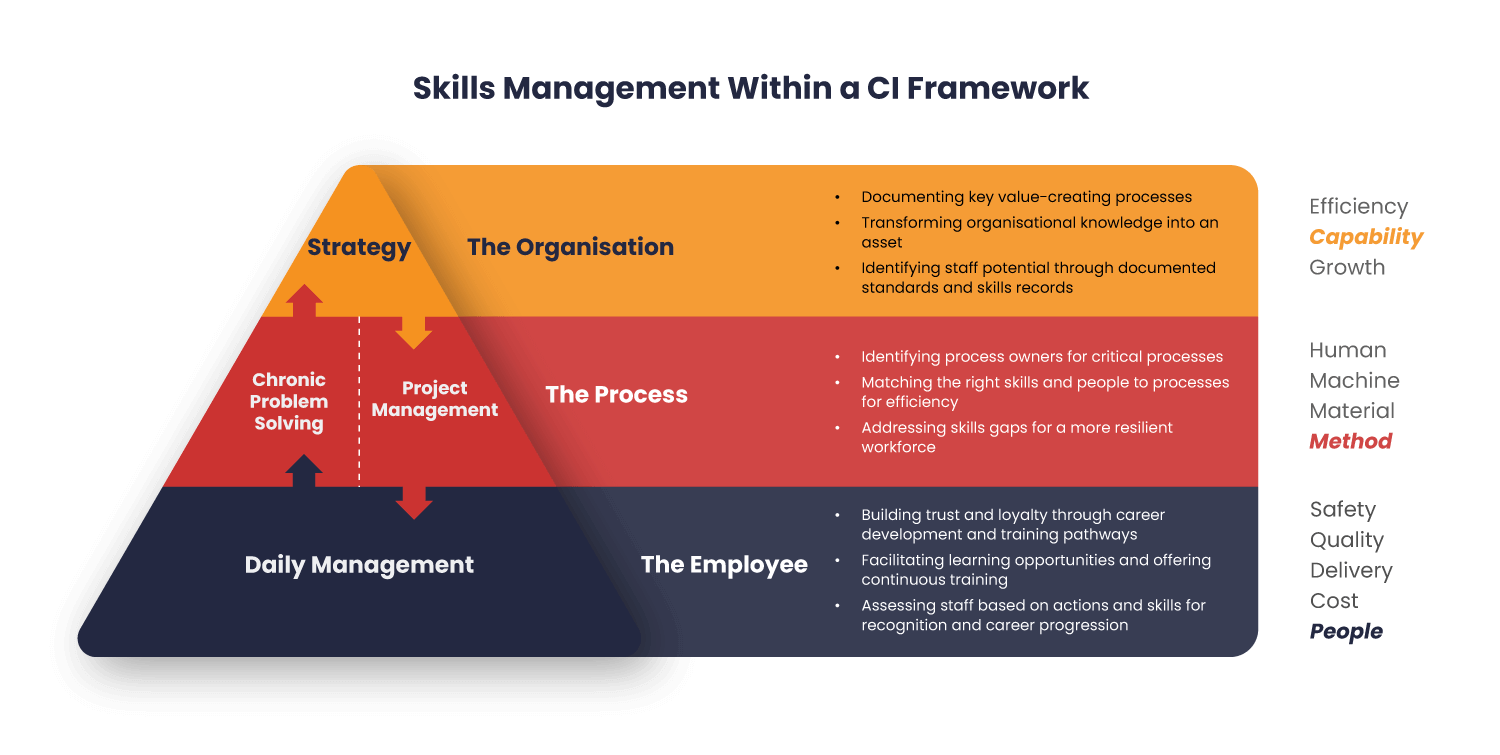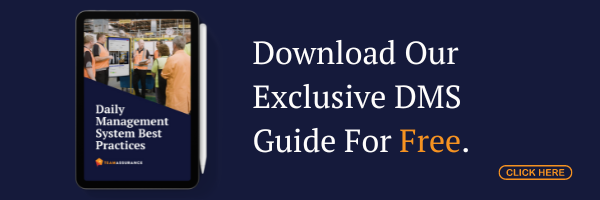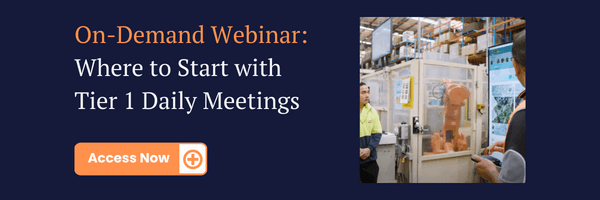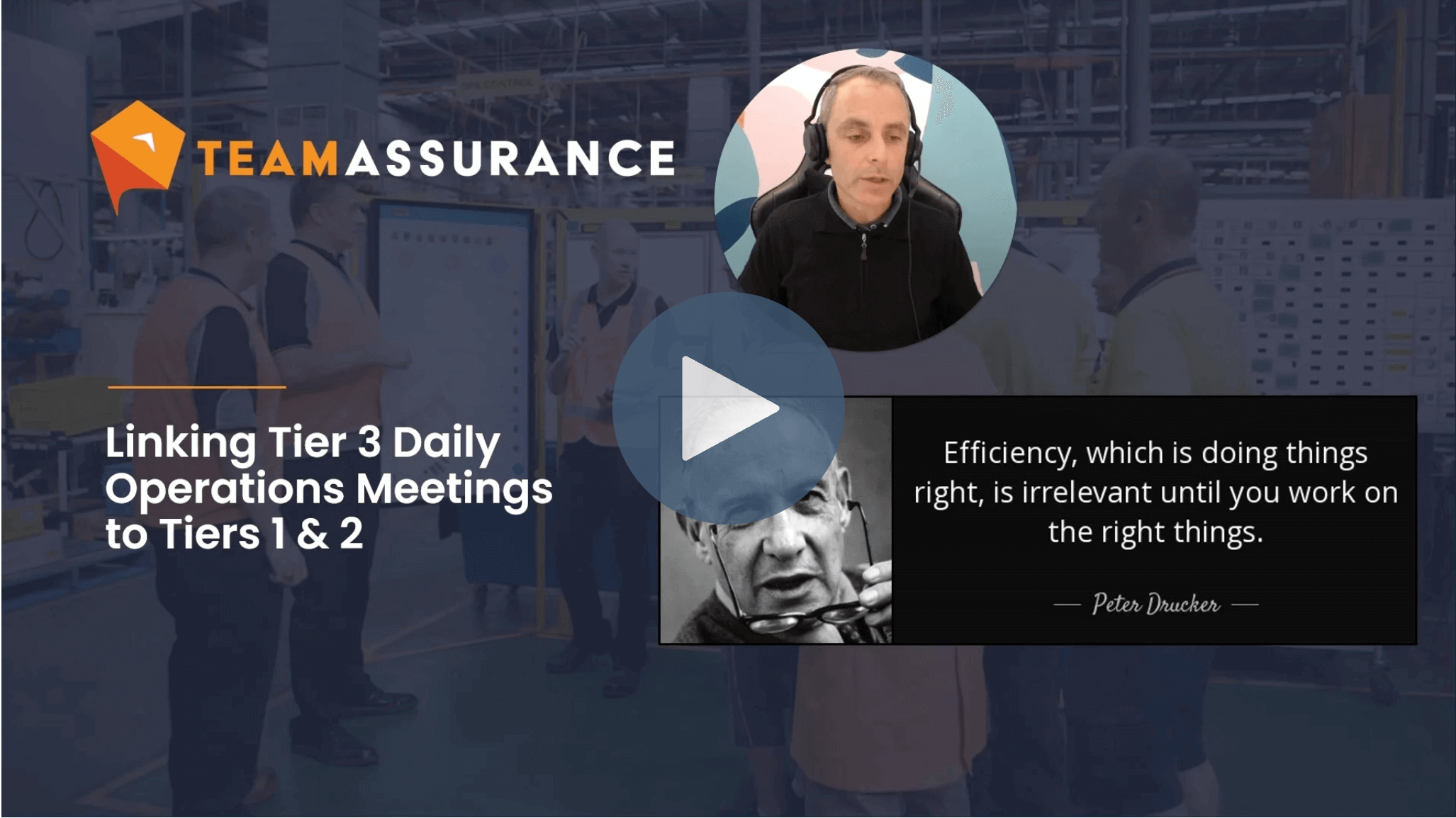Now, more than ever, is the time to review your investment (and focus) in skills management and development. Whilst the numbers vary from country to country, industry to industry, one thing is clear – lack of career advancement, training, and fullfilment are the top reasons people are leaving for greener pastures.
This, coupled with skilled worker shortages, makes employee retention a priority for organisations globally.
Skills are fast becoming the currency by which people find employment and organisations assess their people. It is critical then that organisations have the right systems in place to facilitate visibility, and identify gaps, when it comes to the skills of employees.
Not only to keep up with the external systems being built for the future skills marketplace, but also to set up a competitive differentiator for the organisation itself. Whilst compliance is often set in stone by external forces, there are many elements to consider when developing your internal training and development programs.
There are three key perspectives to frame thinking when it comes to enhancing the way you build and iterate on training initiatives:
Visualising this against our continuous improvement framework helps to clarify which level each element supports:
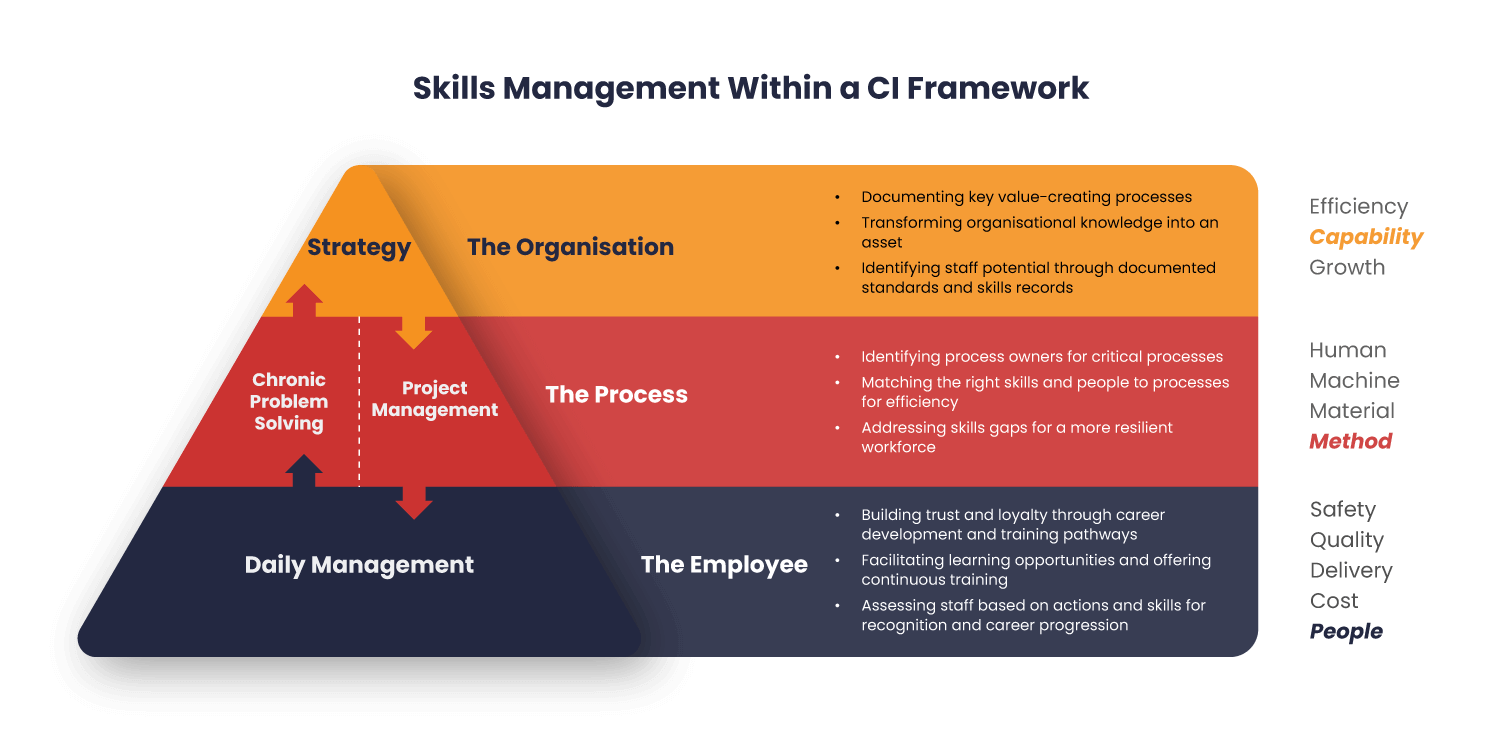
By utilising such a framework, you can better define the objectives of your programs. Plus, you can identify the benefits that improvements in these areas will bring and make clear the cost of not doing anything. Let’s not forget that buy-in from all stakeholders is critical to the success of any CI initiative.
Now this is a particularly meaty topic – one which can’t be summarised within one blog. So there’ll be a few articles in this skills management series I imagine as we look to discuss these perspectives in detail. Nevertheless, in this article we’ll try and capture the ins and outs, main motivations and assumptions when it comes to dynamic skills management.
Skills management by no means a linear process; various elements and considerations need to be factored in simultaneously. But for ease-of-comprehension we’ll step through the perspectives noted above in order.
Let’s start with the organisation perspective…
The Organisation Perspective for Skills and Compliance
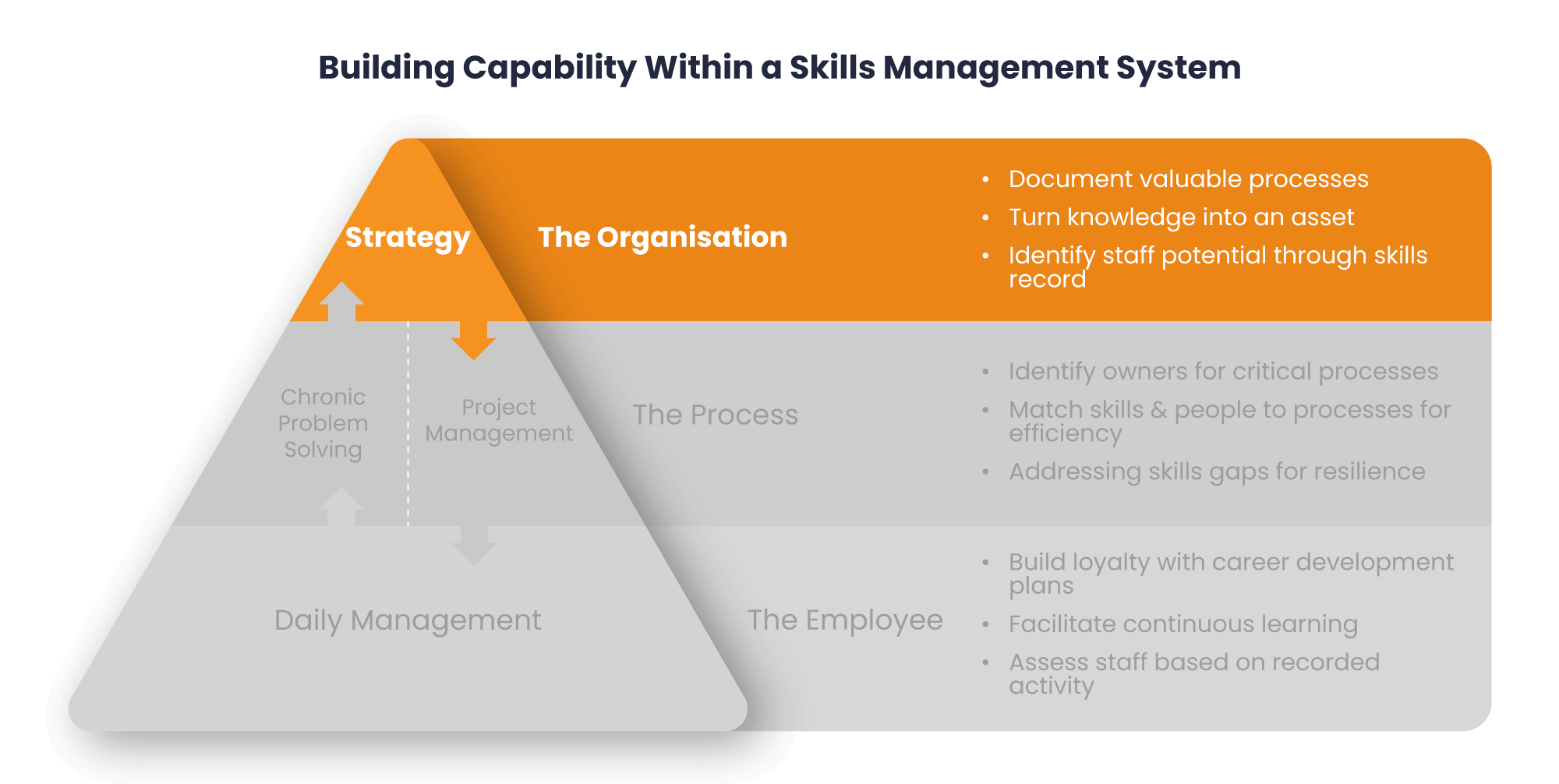
When it comes to compliance, it’s fairly obvious why staff following regulatory standards and holding the appropriate certifications is important. In short: compliance keeps us in business to safely (and effectively) deliver value to all of our stakeholders.
The way that we train our staff, however, is an area ripe for improvement in order to achieve benefits beyond a simple tick in the ‘compliant’ checkbox. Establishing a skills management framework for development is a strategic endeavour that leads to ongoing efficiencies and supports / accelerates growth.
Start with key, value-creating skills management processes
The fundamental step in laying a strong foundation for efficient CI programs is documentation (and accessibility) . This formalises and standardises practise; embedding a way of working that can be scaled across the organisation.
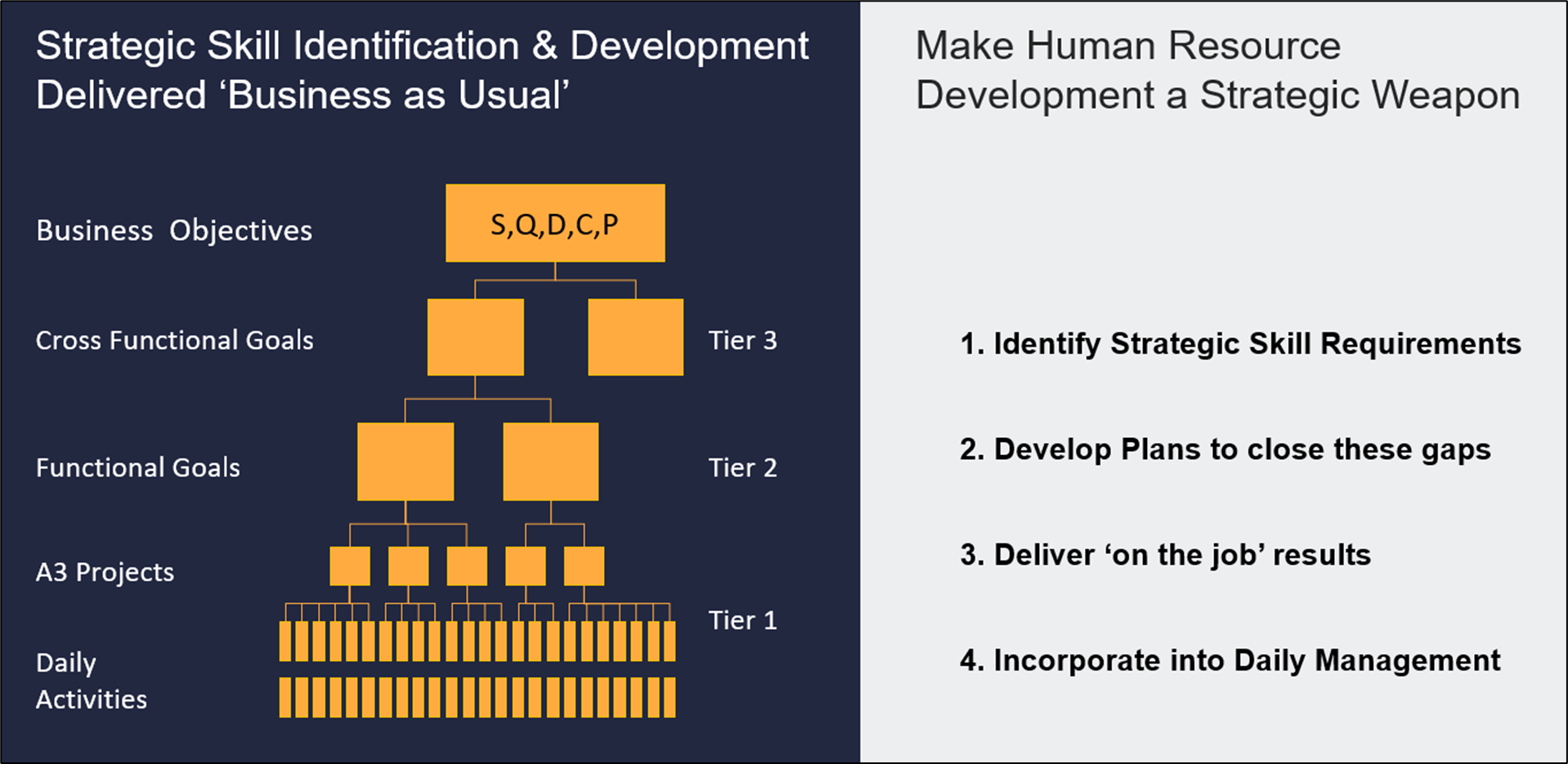
In terms of skills development that means not only recording the various processes, but also the skills and/or certifications required to complete them. The act of documenting standards, creating training schedules, assigning trainers, and recording compliance requirements will highlight where skills management value is created.
These critical processes that staff must understand, and adhere to, are inherently those that deliver value. These intrinsic, and often idiosyncratic, processes underpin the organisation’s success. So, by identifying these processes, and compliance requirements, you can better understand which intangible assets need to be protected.
Turning organisational knowledge into an asset
Setting up standardised training that can be completed to the same degree by every hire effectively turns business ‘knowhow; into an asset. You’re taking specialised knowledge out of people’s heads and into documentation / processes that can be repeated. Therefore, all of this crucial information (and way of doing things) stays within the business – even when people leave.
This helps us mitigate ‘key person risk’ – the risk that a process-owning employee may be removed from the process. For instance they could either be poached by another business, fall ill, get injured, even move to another area of the organisation or retire.
Having documentation in place (and accessible) mitigates any issues arising from personnel changes. With a platform like TeamAssurance in place the information is there to identify current capabilities and proactively notify staff of skills gaps. This enables upskilling of existing staff to be scheduled, proactive hiring to take place, and ensure that the information to train future replacements is available.
As expanded upon further down in this article – the goal should always be to retain employees for as long as possible. Your teams gain a source of mentorship and valuable experience, and the organisation gets to keep a high-performing process owner. However to keep these skilled, high-performing employees at any level in this market, you need to show you have both high hopes and concrete plans for their career.
Identifying staff potential (and whether they are achieving it)
Maximising the potential of your staff is not only a ‘feel-good’ endeavour, it’s also fiscally responsible. After all, you are paying for the whole person, so you want to get the maximum return for your investment, right?
When organisations have documented standards and accurate records of employee skills, it makes it easy to identify when staff are achieving their potential. If there are gaps in their skills, an organisation can direct the staff member to undertake the adequate training or assign a colleague to assist via mentorship.
Concrete and continuous training programs also enable staff members to improve beyond the status quo. It gives them opportunities to further themselves, and in turn provide the business with a more well-rounded employee.
On that note, training doesn’t have to be delivered in just one form. In order to offer your employees the best chance of achieving their potential you must consider both formal and self-paced training opportunities across multiple channels and formats. This is another area where a digital skills management module outperforms traditional ‘point solutions’ for training.
It can provide notifications to both leader and trainee when training is required or completed – and the method by which it should be delivered.
Which brings us another critical consideration for our training and compliance frameworks – the process.
Applying Process Perspective to Skills Management & Compliance
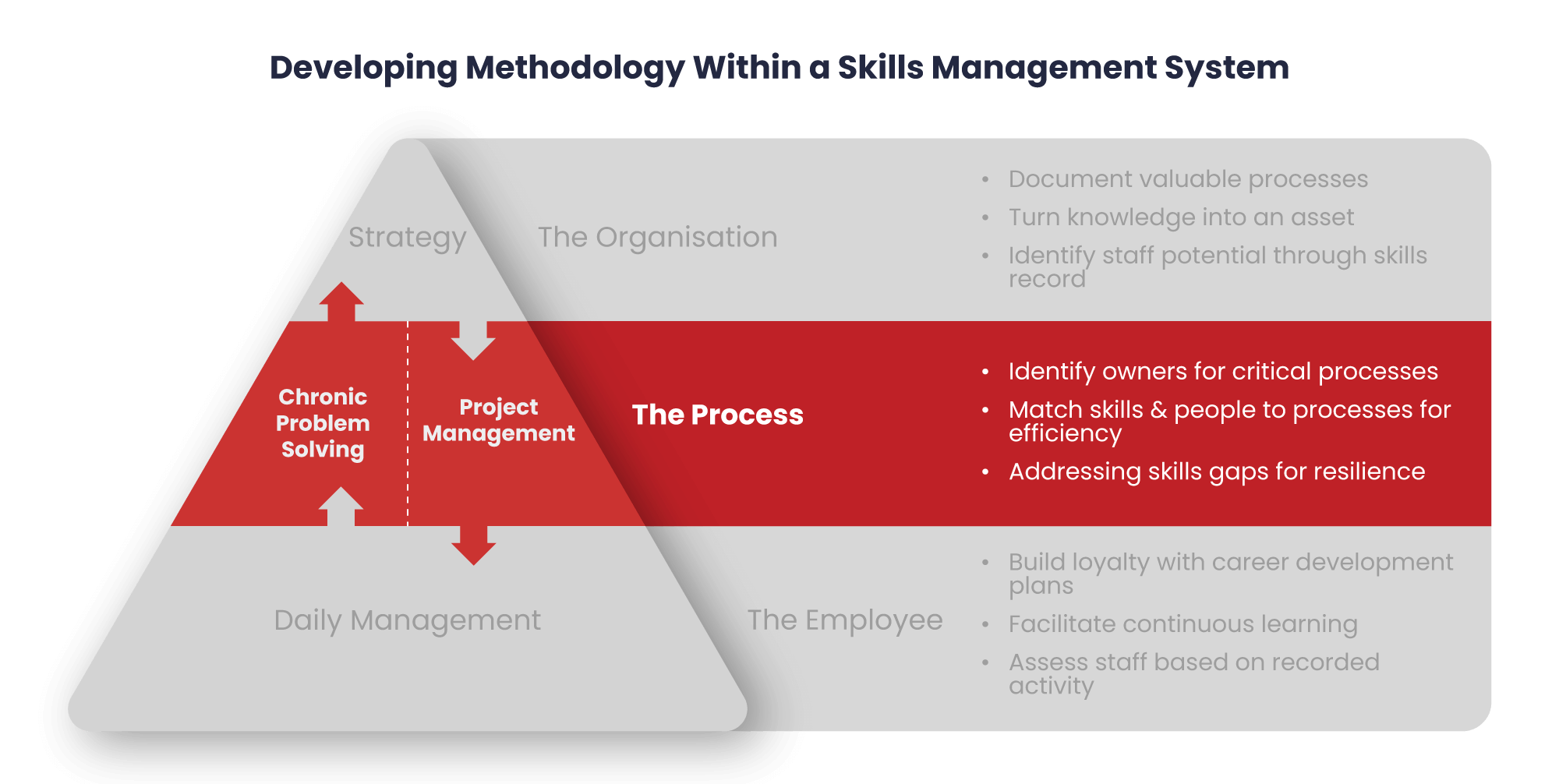
When it comes training and compliance the process plays a significant role in the efficacy of your program. After all, these are the systems by which your staff learn to create value for the business. Getting this right means understanding how training is delivered, how learnings / skills are prioritised, and what tools or documentation your people are provided.
We must make sure we have an idea of which ones need to exist, what they require to run efficiently, and which of our people should be involved with them. This is not a ‘set and forget’ project; it’s takes commitment to regular reviews by the leadership team, feedback collected from your teams, and methodology experimentation.
A good place to start – like most things in Lean – is to think about how people fit into the equation.
Spotlighting the process identifies your process owners
When you take the time to identify your critical processes you also gain visibility over who should own these. That is, if there is anyone there at all – more on that below.
This is incredibly valuable, because it enables us to put people in place for those orphan processes, and ensure everyone in the organisation has clarity around accountabilities.
That means no processes being left ownerless or unimproved over the long-term. Accountability leads to efficiency; efficiency delivers value faster. Value for the organisation, for the employee, for the customer, and for the process itself. And anything creating value should be prioritised and protected as an integral asset to the business.
It’s a self-sustaining recipe for continuous improvement:
- Review and validate key processes
- Create documentation
- Assign owners and delegate training
- Collect feedback from stakeholders and platform reports
- Adjust or implement process based on information.
- Return to step 1
Of course, the above is optimally achieved when information is easy to capture or input, and easily accessed by those involved.
Are we matching the right skills (and people) to the right processes?
To ensure that processes are nailed every time, organisations must ensure that staff have the right skills for the task. Which means identifying and documenting the skills / certifications required for each process. Doing so allows ensures an adequate number of staff trained for that task and identifies where we need to boost numbers or invest in further training.
It also provides more opportunities for meaningful feedback to be collected to improve or expand upon processes. This helps make the organisation more resilient and training programs more robust.
The outcome of which is greater trust of staff in the tools and systems as well as trust in the organisation that it will help them develop their skillsets.
Getting ahead of skills gaps
When there are clear process owners and skill requirements transparently laid out, an organisation is perfectly poised to defend against skills gaps. It becomes more efficient at ensuring the right people are available for each process at all times. It becomes very clear (very quickly) who has the required skills when everything is documented and visualised efficiently.
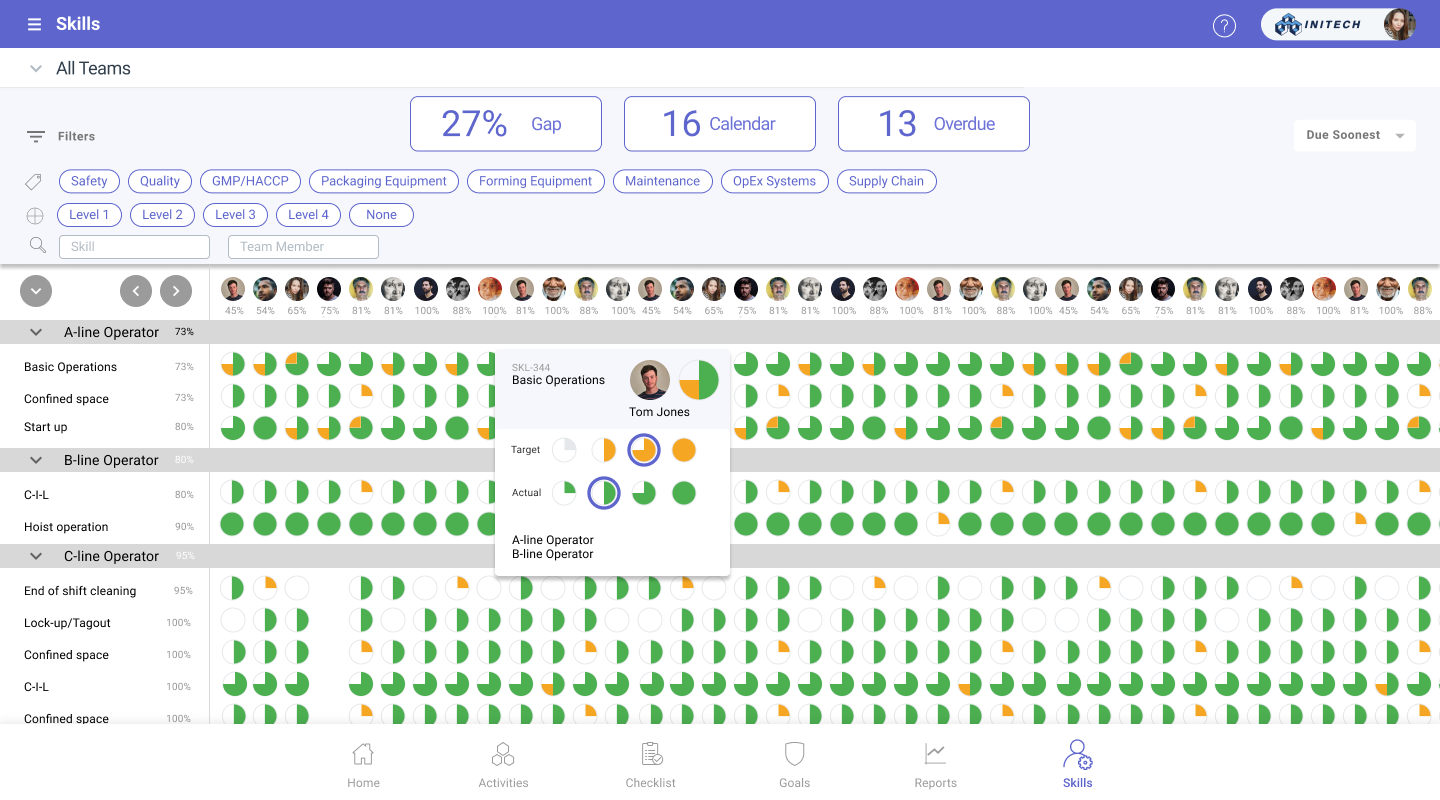
The skills matrix is simple, yet effective way to keep a track of certification and skills development progress you may have come across. Having this tool connected to the daily management system and collecting data in real-time eliminates administrative burden of ensuring training is up-to-date. Assessing the capabilities of any team, tier or function can be done in a couple of clicks. So too can delegating training and assigning process ownership.
Organisations can get ahead of potential gaps – by training up staff, assigning recertification training, or transferring employees from other areas, with the required skills. This mitigates the aforementioned ‘key person risk’ and further strengthens teams’ potential.
Even when there is not a pressing issue at hand, opportunities arise when you know where people could be trained further or when their certifications are expiring. You can more efficiently schedule training, assign self-paced learning activities, or just have more meaningful conversations with employees about their expectations / desires when it comes to building out their competencies.
You can see how people (including yourself) are the primary concern of any actions to be taken and stand to gain the most value from them. Which brings us to…
The Importance of Skills Management from an Employee Perspective
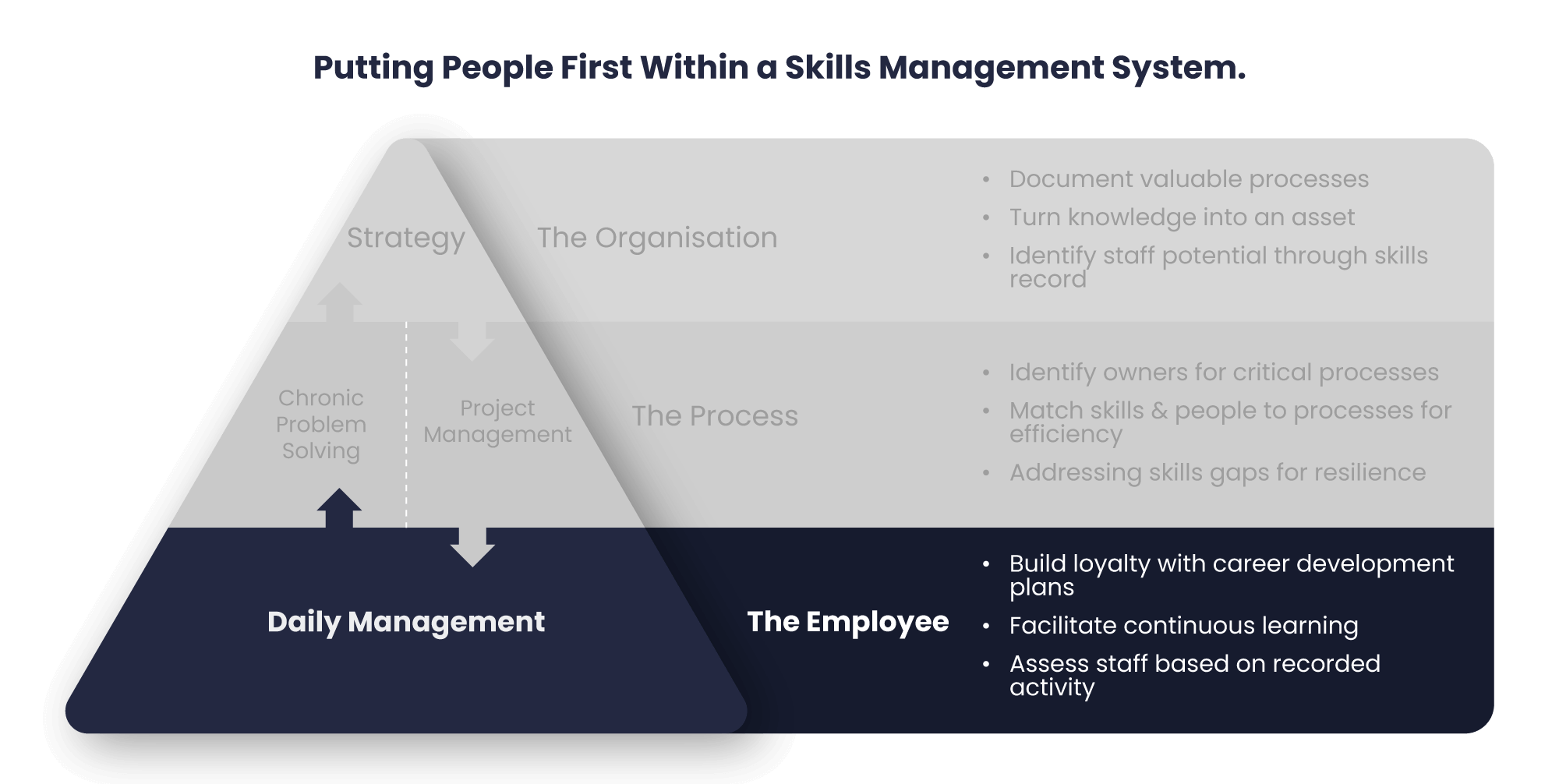
Any decision within an organisation that doesn’t put people front and centre is bound to miss the mark. There has been global shift towards employee-centric workplace dynamics thanks to a competitive skills market. Not to mention that excluding our people from the conversation goes against ‘respect for people’ – a core Lean principle.
So when considering training and compliance from an employee perspective, improving and extending engagement should lead your thinking.
Training builds trust and loyalty from your people
When you have solid plans in place for career development and training pathways, you are implicitly saying, ‘We want you around for the long term. Here are all the things we are going to achieve together.’
Employees feel safe knowing what is expected of them to progress, how to demonstrate value to the organisation, and what they will receive in return. There is no languishing in questions like, “am i doing a good job?” Or, “am I right for this position?”
A feeling of job security, alongside respect from the organisation, is a significant factor in whether employees start shopping around for new roles. In fact, according to recent research, 76% of employees are more likely to stay with a company that offers continuous training.
A lack of trust, or a low perception of job security can lead to employees shopping around. Often they will do this ahead of being disciplined or made redundant. It’s often a defense mechanism to avoid perceived embarrassment.
On the flip side, when employees feel trusted and empowered, they are more likely to evangelise on behalf of the organisation. This can lead to a steady pipeline of new talent and reduced recruitment costs – a win-win outcome.
Identifying learning opportunities and facilitating continuous skills management.
From a commitment perspective, much of our lives revolves around work – hence the work/life balance dilemma. So it makes sense that we should get both intrinsic and extrinsic value from this significant investment of our time.
Demonstrating value and flexing our skills at work in exchange for income is the basic model of employment – but it’s often not enough to provide a sense of deep satisfaction for the long term.
Just as having training plans in place supports the organisation, it also offers value to employees through furthering our potential and offering learning opportunities.
A culture of learning and improvement feeds our innate desire to challenge ourselves. It plays to our inclination as employees to become more well-rounded and therefore our feeling of worth in the workplace.
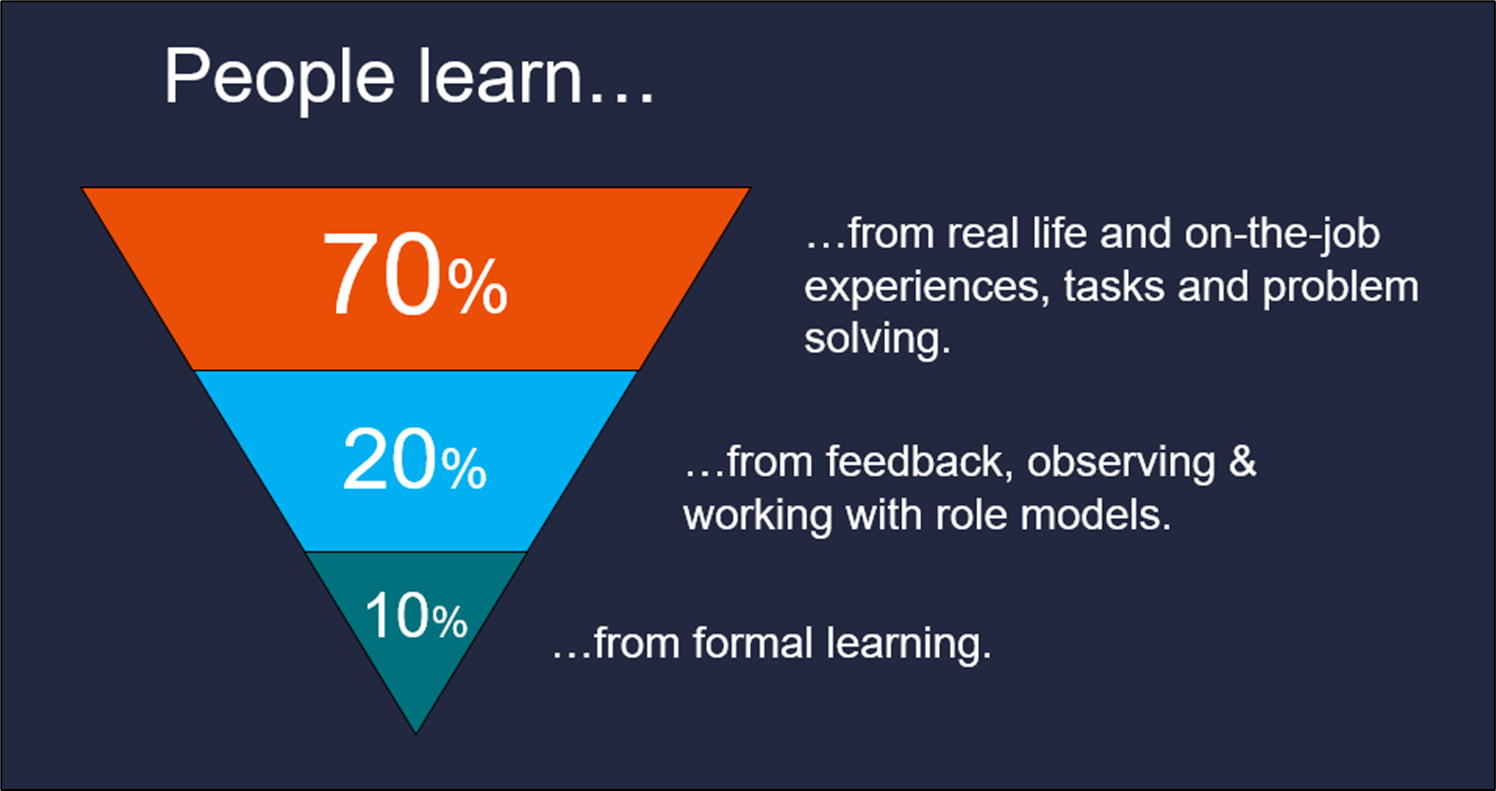
It is here that a robust training and compliance system really shines. It allows for the assignment of training events, tracking their progress, and capturing data to validate the efficacy of the system and its processes.
Assessing staff by their actions, not their words
We all like to think that our actions, skills and worth are noticed by colleagues and leaders. We also believe in the ideal that career advancement is based on merit.
The reality in many workplaces however, is this not the case. All-too-often skills management is a compliance-based, box ticking exercise without meaning.
It can be a real crap shoot at times when it comes to our potential being identified or good, consistent work being noticed and/or documented.
Sure, the big ticket deals we bring in, the wholesale process improvements we contribute, or the large failures we prevent are lauded – but what about our day-to-day successes and contributions? What about having the right people in the mix for a project or a role that requires certain skills?
Without a system in place to capture our day-to-day activities, our actions, and our certifications, organisations have massive blindspots.

When an organisation has visibility of all of these elements they can easily identify their ‘rock stars’ and ensure talent is nurtured and rewarded. It also allows people to self-identify the areas they need to improve in and makes clear what needs to be undertaken in order to qualify for career progression.
Clarity and visibility throughout our development builds trust in the system and therefore trust that we will be suitably recognised for our actions.
As you can see, trust is the common denominator when it comes to what we seek as employees.
Achieving Clarity for Training and Compliance Success
When considering your training and compliance systems (or lack thereof) we must factor in various perspectives to identify the right way forward. One common narrative amongst all of these perspectives is that visibility and clarity leads to value.
This clarity only comes from regular review and focus on our training initiatives. We must undertake these reviews through multiple lenses and asking ourselves the right questions. It is only then that we can identify the systems required for skills management.
With skills being the currency of the future, organisations need a way to identify, organise and develop skill sets in order to attract and nurture their workforces.
So the million dollar question is – are your training and compliance programs ready?
Skills Management Integrated into the C.I. Framework – Not an Isolated System
To achieve alignment of all our people when it comes to objectives and expectations, we must consider how all our varying processes and systems connect. The alignment of our Lean tools like standardised problem solving techniques, Standard Operating Procedures (SOPs), and a Tiered Daily Management process that supports the entire PDCA loop are key to achieving success in this regard.
The illustration below demonstrates how we designed an interconnected TeamAssurance platform to avoid locally optimised, disconnected ‘Point Solutions’ (digital or analog) that obscure our understanding of objectives and expectations.
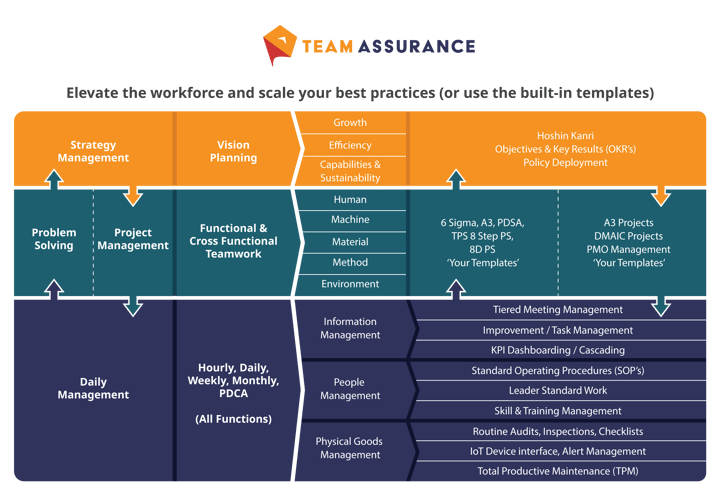
If you’re a business in need (or a consultant with clients in need) and you’d like to explore the opportunities that digital-aids to Lean tools provide contact us for a demonstration of the TeamAssurance platform today.

